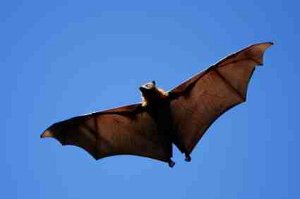|
Chiroptera, The Order Of Bats, Where Variety Is The Spice Of LifeThere are around 4,500 known mammal species in the world today. Bats (order chiroptera) make up about 1,100 of them and are the only mammal species that can truly fly. One reason they're so successful is partly because of the variety they have in:
. size . and how they go about getting food This adaptability means they can be found in most parts of the world, from tropical Madagascar to the rainy British isles. They're even present in Alaska! Warmer regions tend to have more chiroptera species as there's usually more food in these places. Here are some links for quick and easy navigation around this page: But just in case you were wondering, I'll quickly explain what an order is: ======== I found out during a plant science class that an order is one of the levels that's used to group all living things. The way I remember the different levels is like this:
As you go from kingdom to species, the groupings of living things within each level become more and more specific. It's all about how related the species are. Bats are grouped into an order called chiroptera, which means hand-wing in Greek. Chiro-wah? That's exactly what I thought when I first saw this word. Since then, I've heard it pronounced in two different ways, KAI-RO-TERA or KAI-ROP-TERA. This order is divided into 2 sub orders, megachiroptera and microchiroptera, and their members are called megabats and microbats. ======== The smallest members of chiroptera can measure as little as around 31 mm/just over an inch in length (like the cutely named bumblebee bat ). Or have a magnificent wing span of over 1 m like this Australian grey headed flying fox: 
Their diet can take the form of:
. fruits, flowers and/or nectar . other small animals . and it has to be said, blood I know you might find that a bit yuckie, but feeding on blood (hematophagy) isn't something that's peculiar to the three species of vampire bat. Leeches, many insects, some worms and even people eat blood or foods that contain it. Scientists are really excited about the fact that vampire bats have a chemical in their saliva that stops blood from clotting. It could lead to new medicines for diseases such as strokes. Bats have a very important role to play in maintaining the balance of nature. They make massive contributions to forest regeneration, plant pollination and the dispersal of seeds. Some bats are also what are known as indicator species. This is because their population levels and health give a strong indication of the condition of their local environment. An example of this is the numbers of insect-eating bats in an area will tell you about insect population levels. And because most insects are dependent on plants, this will tell you about how well the vegetation is doing. Imagine being able to produce high frequency sound waves that no one else can hear. And then being able to receive these waves as they bounce off objects in your environment and then use this information to navigate your way around places and to locate your prey (I mean food :-)) This is what insect-eating (insectivorous) members of chiroptera do. Echolocation can't usually be heard by humans without a device called a
bat detector
Different species echolocate at different frequencies and so a detector can be an aid in their identification. Bat Caves
|






